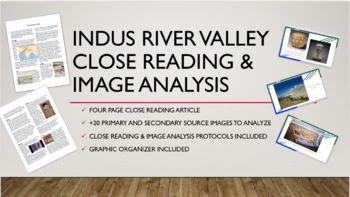Indus River Valley Civilization: Close Reading & Image Analysis
- Zip
What educators are saying
Description
In this lesson, students will close read a secondary article and analyze primary and secondary source images about the ancient Indus River Valley to evaluate their society. This lesson includes:
1. A Close Reading Secondary Article - Indus Valley
2. +20 Primary and Secondary Source Images to analyze
3. Two protocol posters: Close Reading & Annotation and OPTIC Image Analysis
4. A graphic organizer
5. Teacher Notes for easy instruction
The activity can be completed in 2 ways:
- Group Work with roles
- Individual Investigation
Debrief with reflection question or student share out.
Reflection Question: Assess the civility of the Indus Valley - What evidence is there to prove that the Indus Valley civilization was in fact, civilized?
FOLLOW & Rate us on TPT!
Leave feedback and earn TpT money!
We love hearing from you! It helps us grow and improve our resources. Once you've made a purchase, be sure you're logged in, leave us feedback, and you'll earn TpT credit - TpT Money! If you have any questions about our products, please do not hesitate to contact us! We're here for the students and you!




